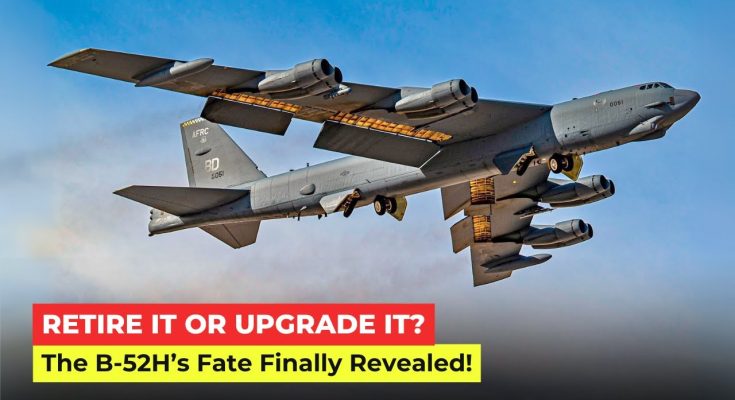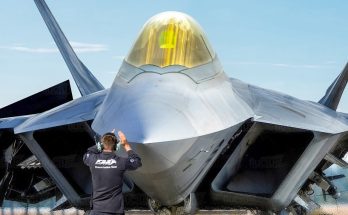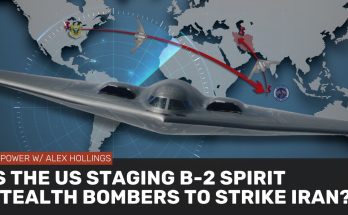The B-52H Stratofortress, a cornerstone of the U.S. Air Force’s long-range strategic bomber fleet, has seen more than six decades of service and remains one of the most iconic and enduring aircraft in history. As one of the oldest active-duty aircraft in the world, the question of whether to retire it or upgrade it has been a point of ongoing discussion for years. Let’s explore the fate of the B-52H, the rationale for upgrading it, and the challenges of keeping it in service.
The B-52H’s Longevity and Legacy
The B-52 has been in service since 1955, originally designed to carry nuclear bombs and perform strategic bombing missions during the Cold War. Over the years, the aircraft has undergone numerous upgrades to its avionics, weapons systems, and engines, allowing it to remain relevant in modern warfare. The B-52H variant, which was introduced in the 1960s, is the latest and final iteration, with 103 airframes still in service as of today.
The B-52 was designed to be adaptable, capable of carrying conventional and nuclear payloads, and to operate at long ranges, often penetrating heavily defended airspace. The aircraft was a vital asset during the Vietnam War, the Gulf War, and various other conflicts, providing strategic deterrence and precision strike capabilities.
Why Upgrade the B-52H?
Despite its age, there are several reasons the U.S. Air Force has decided to upgrade rather than retire the B-52H:
-
Proven Versatility and Reliability: The B-52 is an exceptionally versatile platform. It can carry a variety of precision-guided munitions, including joint direct attack munitions (JDAMs), cruise missiles, and nuclear payloads. The bomber’s long-range capability (with a range of up to 8,800 miles) allows it to strike targets anywhere in the world, and it can operate in contested environments with electronic countermeasures for survivability. The B-52H has proven it can still perform effectively, even in modern combat scenarios.
-
Affordable and Adaptable: The B-52H is relatively affordable to maintain compared to newer bombers like the B-2 Spirit or B-21 Raider. With continued upgrades, the B-52 can remain relevant without the astronomical costs of developing and procuring new bombers. The upgrades can include new avionics, weapons control systems, and modern engines, allowing the aircraft to operate more efficiently and for longer periods.
-
Increasing Cost of Replacement: While the U.S. Air Force is investing in next-generation bombers such as the B-21 Raider, these stealth bombers are expensive, with the B-21 alone projected to cost upwards of $500 million per unit. The B-52H, by contrast, can be upgraded for a fraction of that cost and provides a more cost-effective way to maintain a robust bomber fleet until the newer bombers are fully integrated and operational.
-
Sustainability and the Long-Term Role of the B-52: The B-52’s airframe is incredibly durable, and with the right upgrades to its propulsion, avionics, and mission systems, it could remain operational well into the 2030s or beyond. The aircraft has been regularly upgraded, with recent improvements to its radar, targeting systems, and weapons integration. The B-52 also benefits from interoperability with modern munitions, giving it a continued role in conventional strike and strategic deterrence.
Key Upgrades for the B-52H
The U.S. Air Force has already initiated several upgrade programs for the B-52H to keep it operational for decades to come. Some of the most significant upgrades include:
-
Engine Upgrades: The B-52H is currently powered by eight Pratt & Whitney TF33 turbofan engines, which are aging and costly to maintain. The Air Force has been exploring options to replace these engines with newer, more efficient engines (e.g., the F119 engine used on the F-22 Raptor) to reduce maintenance costs and increase fuel efficiency. The engine replacement program (which could see up to 4 engines replaced per B-52 over time) would extend the aircraft’s operational lifespan by improving its performance, range, and maintenance needs.
-
Avionics and Weapons Systems Modernization: The B-52H’s outdated avionics and weapons systems have been progressively replaced with more modern systems that integrate advanced radar, satellite communications, and precision strike capabilities. The aircraft is being **equipped to carry the new JASSM-ER (Joint Air-to-Surface Standoff Missile-Extended Range), as well as other advanced cruise missiles and hypersonic weapons that are expected to become part of the bomber’s payload in the future.
-
Crew Systems: The B-52’s cockpit has also been modernized with digital displays, new flight control systems, and improved pilot and crew training systems. These upgrades ensure that the B-52 can operate efficiently in modern airspace while maintaining a high level of situational awareness for its crew.
-
Enhanced Survivability: The B-52H is being upgraded with improved electronic warfare capabilities, such as new countermeasures, sensors, and jamming systems, to help it operate in highly contested and hostile environments. These upgrades enhance the aircraft’s ability to penetrate adversary defenses, whether it’s performing conventional bombing or carrying out nuclear deterrence missions.
Why Not Retire the B-52H?
While the B-52H has a rich history and substantial capabilities, some argue that it’s time to retire the aging aircraft in favor of newer platforms. However, there are several reasons why retiring the B-52H is not yet feasible:
-
Operational Flexibility: The B-52 offers significant flexibility in terms of mission types, payload capacity, and operating environment. The aircraft can carry both conventional bombs and nuclear payloads, making it a cornerstone of the U.S. strategic deterrence policy. It can perform long-range precision strikes, even in high-threat areas, while remaining relatively affordable to operate.
-
Lack of Immediate Replacement: The U.S. Air Force is investing in the B-21 Raider, but this aircraft will not be available in sufficient numbers for several years, and the B-52 remains a crucial part of the bomber fleet in the meantime. Additionally, the B-21 will be more specialized as a stealth bomber, whereas the B-52’s ability to carry a wide array of munitions and perform diverse missions still makes it valuable.
-
Global Reach and Deterrence: The B-52’s role in nuclear deterrence is significant. Its ability to carry nuclear weapons and be deployed to various parts of the world remains a key component of U.S. strategic defense. The aircraft can be quickly deployed to show presence and deter adversaries, making it an important element of U.S. global power projection.
The B-52H’s Future: Upgrade or Retirement?
In conclusion, the B-52H Stratofortress is likely to remain in service for many more years due to its affordability, versatility, and ability to be modernized. With ongoing upgrades to its engines, avionics, and weapon systems, it can continue to serve alongside next-generation platforms like the B-21 Raider. Rather than retiring it, the U.S. Air Force is opting to upgrade the B-52H to maintain its effectiveness in the face of evolving threats.
As long as the B-52H remains a viable and cost-effective option, it will continue to play a critical role in U.S. defense strategy. The aircraft’s fate has been determined not by its age, but by its proven capabilities and the need for a robust, flexible, and enduring bomber fleet.



